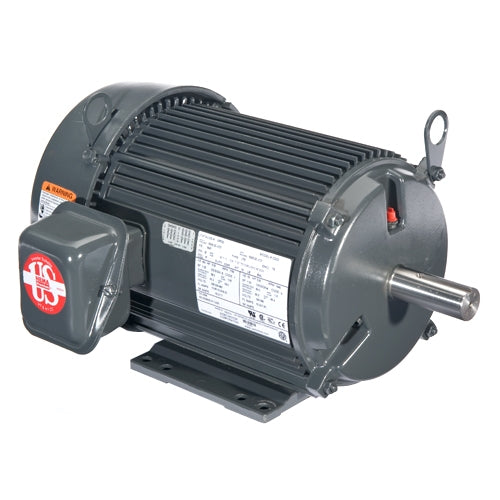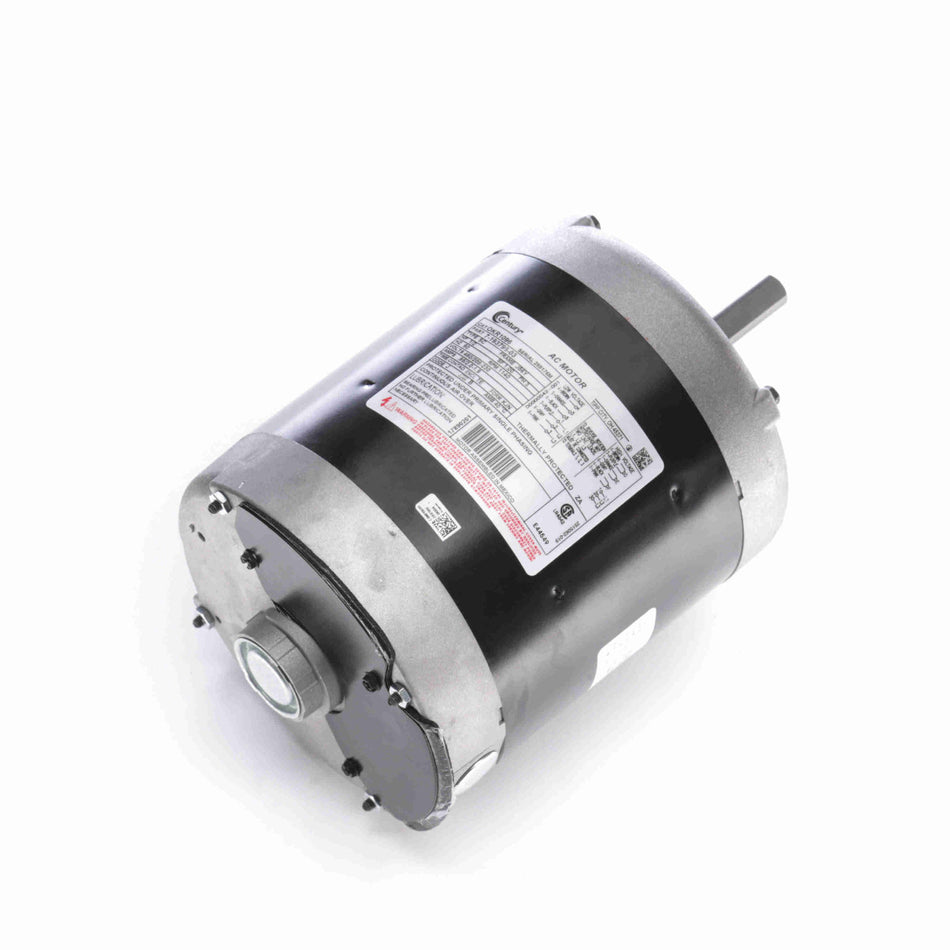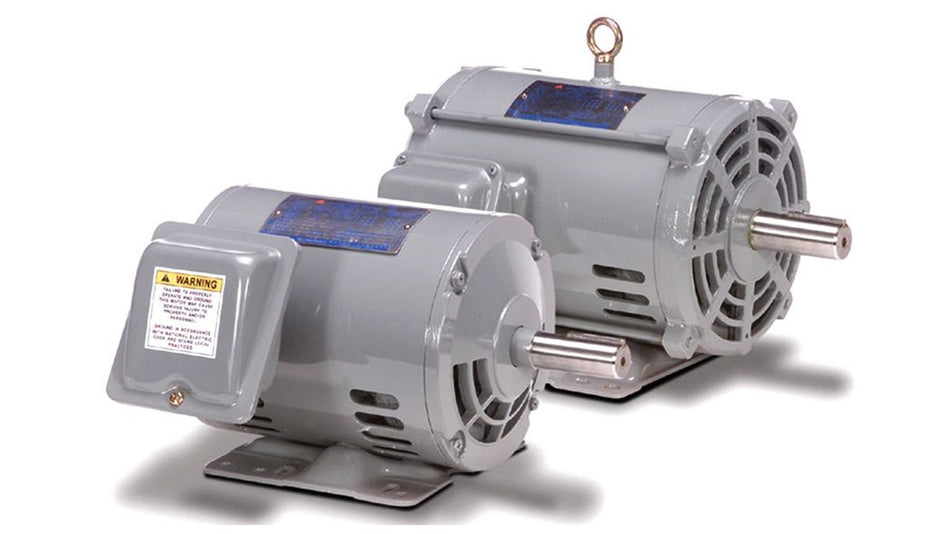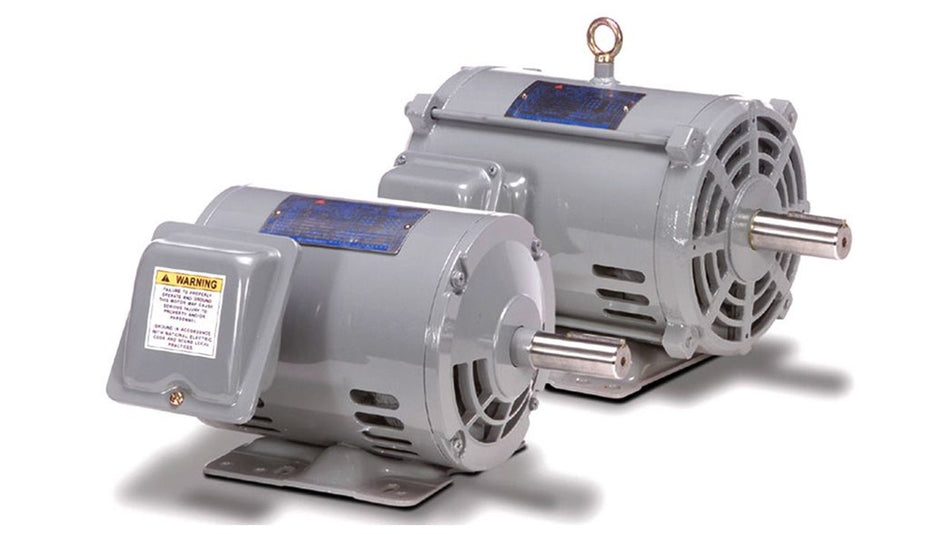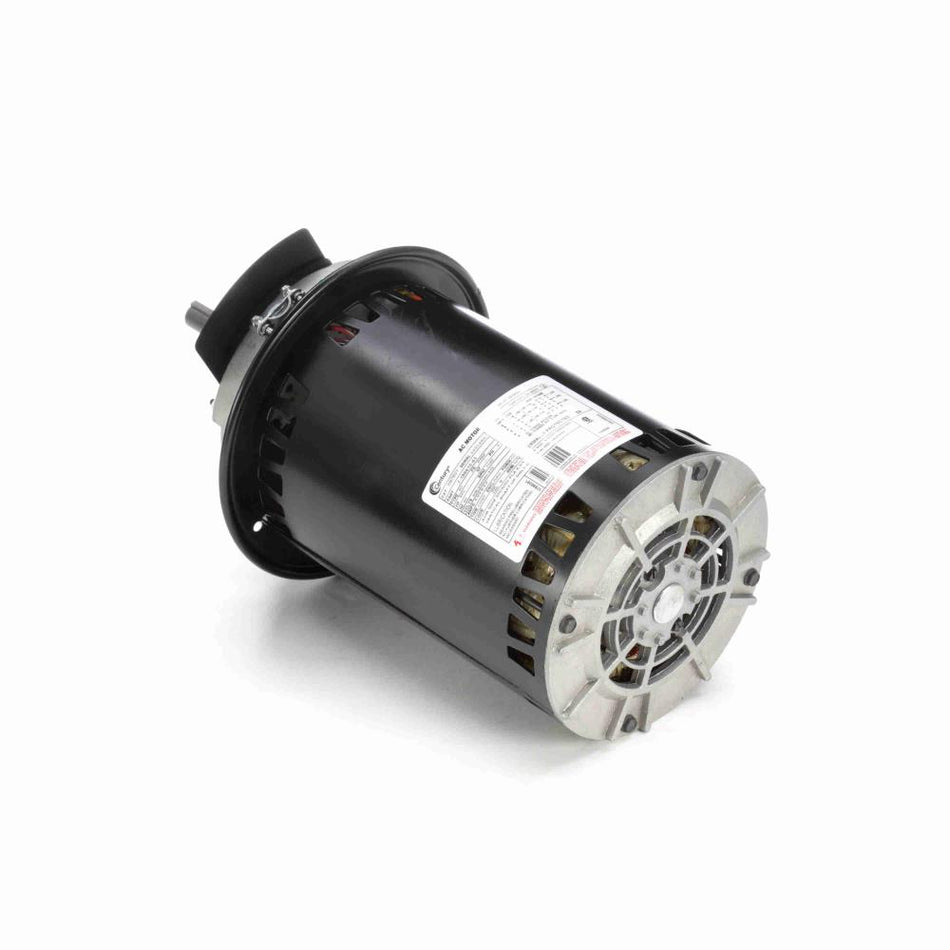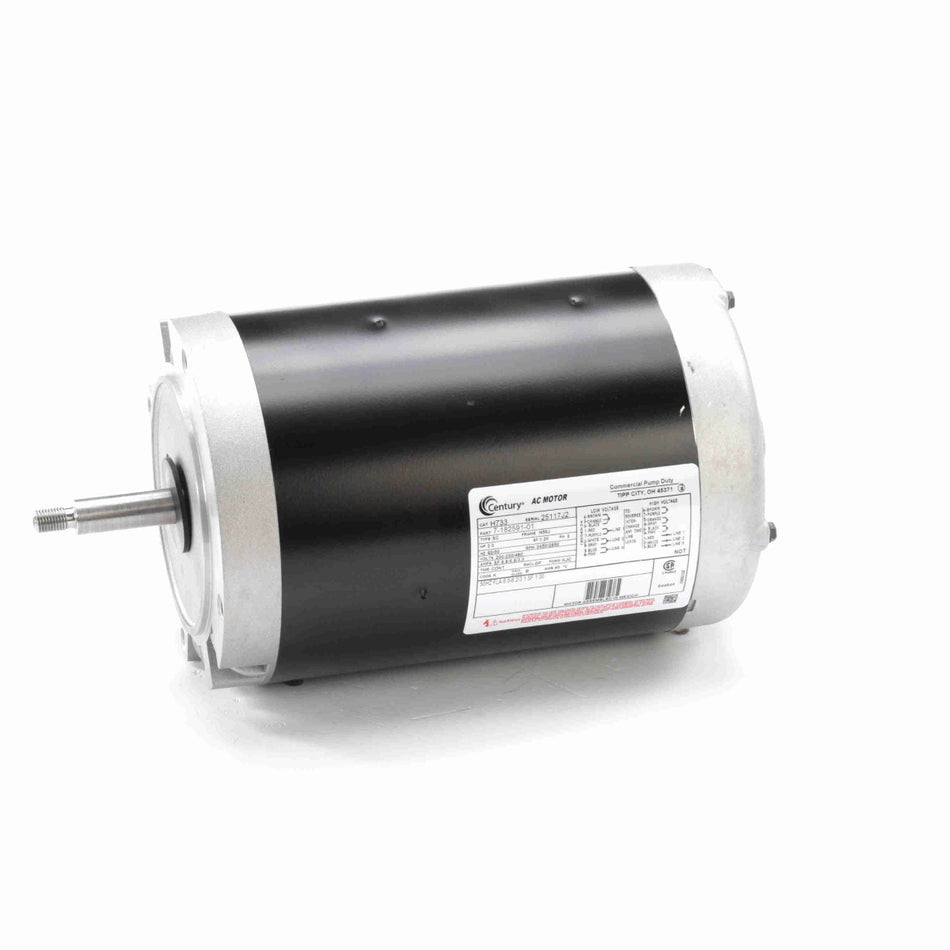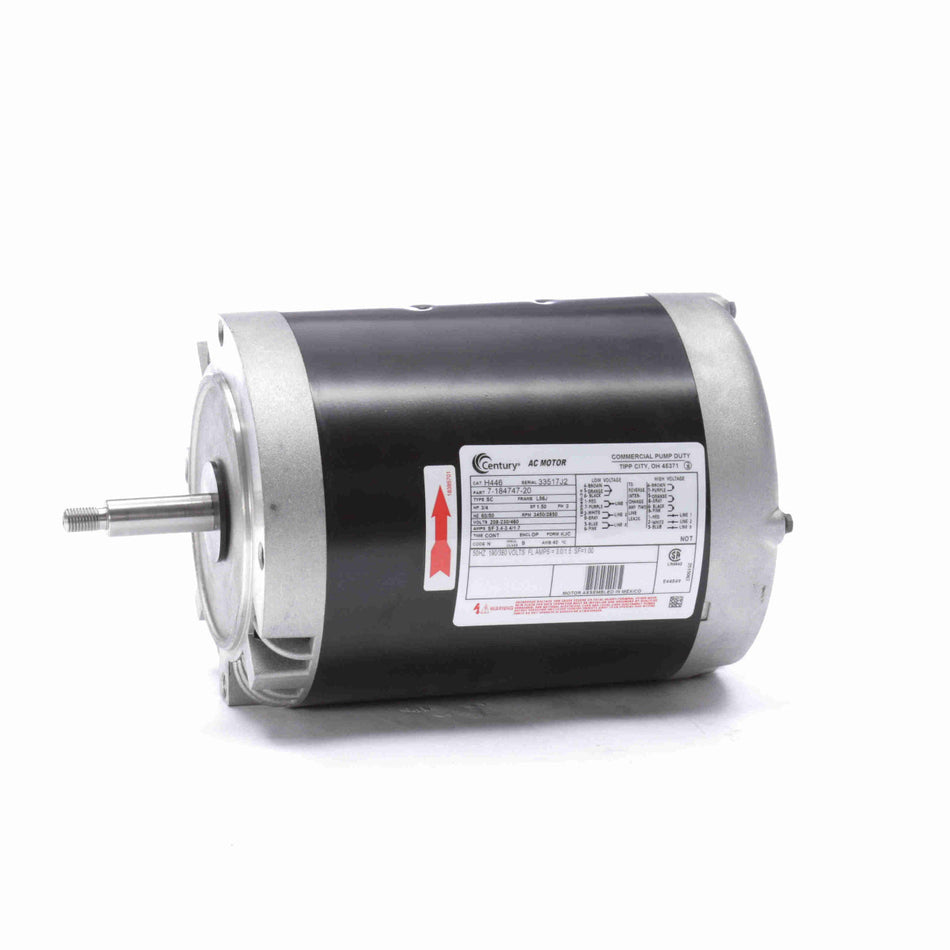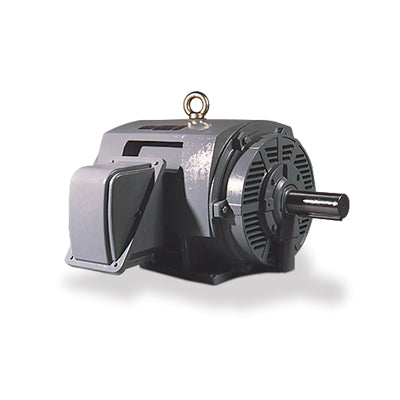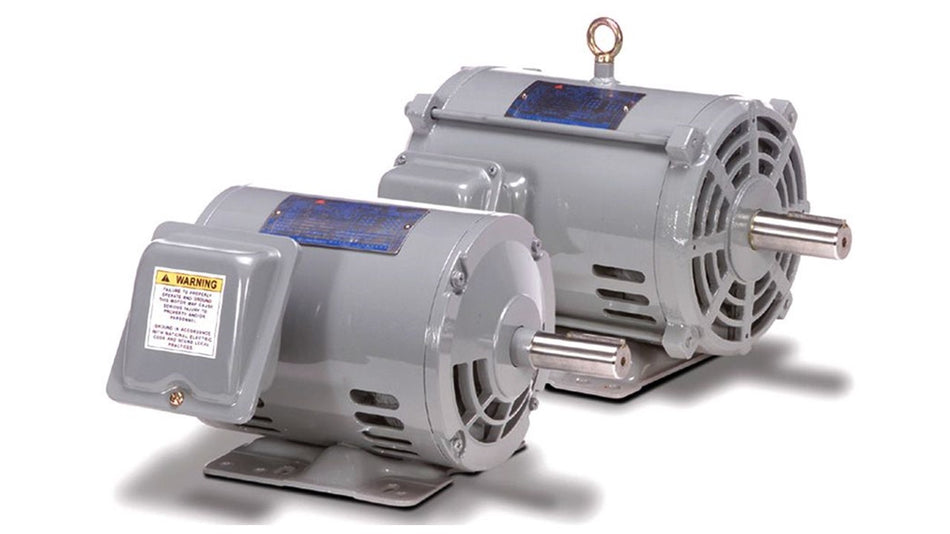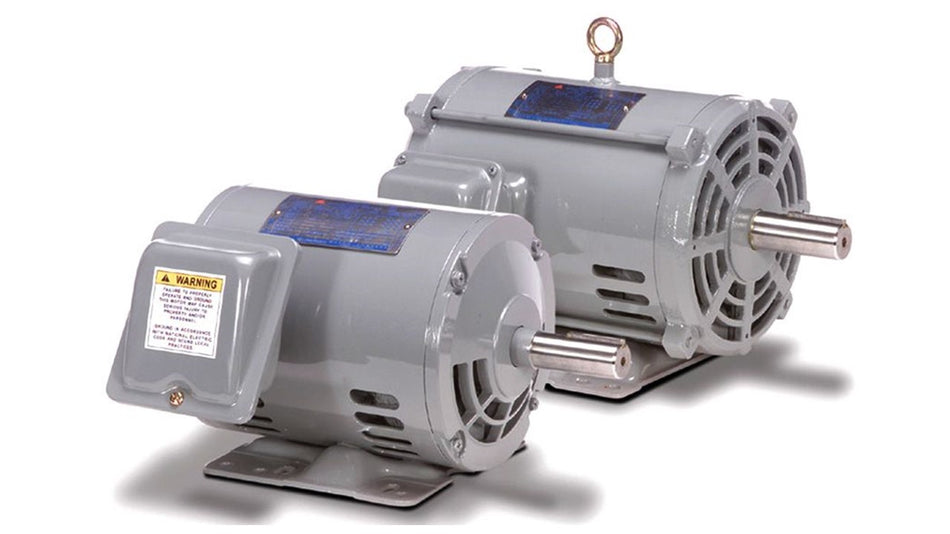4651 Products
3 Phase General Purpose
Square One, The Trusted Name For Induction Motors
One of the most common types of AC electrical machines, General Purpose AC Motors are used for blowers, fans, compressors, pumps, tooling, conveyors, and other machinery.
These general purpose machines are designed to meet or exceed the energy efficiency requirements for the United States, Canada, and Mexico.
Square One Electric offers 3 Phase induction motors at wholesale prices.
Our website only has up to 40hp – CONTACT US for a quote on larger motors.
Click here for General DC Motors
Square One Electric Motors and Pumps is an authorized service center and distributor for most major brands.
We carry the following top brands:
Use our MASTER PRODUCT SEARCH to narrow your selection by horsepower, RPM, frame, voltage, application and more.
All units in our inventory are brand new and come with the following features:
- Ships with Manufacturer’s warranty (Warranty based on motor type and brand. See manufacturer’s website or contact us for more information.)
- Shipped from the closest motor warehouse
- Meet or exceed the United States Energy Efficiency requirements
To place your order, use the search box to type your part / model number, or use our Master Product Search to narrow your selection by choosing horsepower, phase, RPM, frame, enclosure, and voltage filters.
Each electric motor manufacturer designs and markets their products to their specifications. There are, however, similarities that can be found in most brands, including high starting torques and overload capabilities.
For pricing on motors larger than 40hp, or for a custom-built unit, please CONTACT US HERE.
Electric Motor Warranty Policies
Each motor ships brand new and has a factory warranty; but each manufacturer’s warranty varies. Please see either the brand page on our website or the manufacturer’s website for warranty information.
Feel free to contact us with any warranty questions.
3 Phase General Purpose Motors
Three phase induction motors are designed for large and small commercial and industrial applications, from pumps and compressors to manufacturing equipment. Whereas homes and farms use single phase, factories and commercial buildings mostly use three phase.
3 Phase Machine Features include:
- Suitable for Inverter use
- Rolled Steel and Cast Iron construction options
- Totally Enclosed and Open Drip enclosure options
- F1 and F2 conversion options on certain models
- Up to a 3 year warranty on certain premium energy efficient models
OUR SERVICE AREA COVERS THE ENTIRE STATE OF DELAWARE AND THE SURROUNDING PARTS OF MARYLAND, PENNSYLVANIA, AND NEW JERSEY.
Types of 3 Phase Induction Motors
General purpose induction motors are categorized into two groups—the squirrel cage type that uses rotor bars and the slip-ring type that uses rotor winding.
Squirrel Cage Motor
As the name suggests, this type is shaped like a squirrel’s cage with a cylindrical core and angular exterior gaps, ensuring a smooth and quiet operation. It runs on copper, aluminum, or brass rotor bars which are sealed by end rings.
The simple build does not include brushes or slip rings, yet the motor remains sturdy and strong.
Squirrel cage induction motors are preferred for applications that do not need speed control, such as compressors, pumps and submersibles, flour mills, pressing and grinding machines, conveyors, lathes, and other equipment with low mechanical power.
Slip-Ring Motor
Also called wound rotor, this machine uses a rotor winding.
Like the squirrel cage type, it also has a cylindrical core and angular exterior gaps where the rotor winding is situated. This is connected to slip-rings affixed to its end terminals, hence the name. These slip-rings, along with brushes, serve as conductors to the external resistance to control speed and boost the starting torque.
Slip-ring motors are a more complicated construction than squirrel cage motors and are mostly used in equipment where a high starting torque and variable speed are required. Examples include line shafts, steel mills, hoists, lifts, cranes, and heavy mechanical machinery.
Replacement Electric Motor
Replacing an AC Electric Motor? The task can seem daunting, especially if the motor you have is no longer available.
Use our MASTER PRODUCT SEARCH to narrow your selection by horsepower, RPM, frame, voltage, application and more.
The following are common questions to get answers when replacing a motor:
- What is the application?
- How is it mounted?
- What type of motor is it?
- What ventilation does it have?
- How many speeds does it have?
- What is the direction of rotation?
- What is the horsepower, RPM and voltage?
- What is the shaft length and diameter?
- Does the motor have any special features?
The nameplate on your current induction motor provides all the details about the unit. You must find one that exactly matches its voltage, phase (PH), enclosure (TEFC, ODP), horsepower (HP), frame (FR), and rotation per minute (RPM).
Below is a brief explanation of these features to help you understand them better:
-
Horsepower
Horsepower (HP) is the measurement of output power and a key component when selecting a motor. This number can be found on the nameplate. Motors below one horsepower are called fractional.
When replacing a motor, you want to match horsepower. In some cases, if a replacement isn’t available, you may be able to go up in horsepower if other criteria match (such as the frame). CONTACT US for assistance.
-
Speed (RPM) and Rotation
A motor’s base speed is determined by the number of wound coils in the motor (called poles). While there are multi-speed motors, General Purpose motors are one speed. The available speeds are 3600 (2 pole), 1800 (4 pole), 1200 (6 pole), and 900 (8 pole).
Also, you may have to figure out if the motor turns clockwise (CW) or counterclockwise (CCW). You can find this information on its nameplate, or there may be a sticker with an arrow on the motor.
Speed of the replacement motor must always match the speed of the replaced motor.
-
Motor Frame
The motor frame indicates measurements for key dimensions: distance between mounting holes, shaft diameter, length, and height from the ground. All these elements will be the same for each frame regardless of the manufacturer.
However, not all motors with the same frame are exactly alike – the motor body may differ. Double-check your new motor’s diagram for body diameter and length if it matters for your application (like if you have a tight space).
Frame suffixes indicates motor features, as well:
- C – *C-face mounting flange, unit has mounting holes drilled into the motor’s shaft-end to mount from the machine into the motor. Unit may or may not have a motor base.
- D – D-Flange, unit has a flange attached to drive (shaft) end, almost looks like a saucer with holes that sticks out from motor. This is to screw from the motor into the machine it’s mounting to.
- S – the shaft is shorter and has a different diameter than the standard T frame
- Y - special mounting dimension
- Z - shaft modifications
* In a pinch? A footed C-face motor can usually be used to replace a standard T-frame (the holes don’t hurt anything).
Here is the NEMA Motor Dimension Chart for measurements by frame:
-
Motor Enclosure
Installation site and exposure to elements are the basis for the type of enclosure a motor needs. Thus, depending on your application, here are your options:
- TEFC (Totally Enclosed Fan Cooled): These indoor and outdoor machines are completely enclosed to protect from rain and snow. An internal fan is added to prevent overheating.
- ODP (Open Drip Proof): Designed for controlled environments with little dust, dirt, or exposure to water, these units are open drip-proof for cooling. This means that air can pass through their body via several openings.
- TENV (Totally Enclosed Non Vented): These units have no vent holes in the end bells (housings) or body. It can be mounted vertically or horizontally and depends on an external fan blade or airflow for cooling.
- OPEN: With vent holes in the housings and body, air easily enters and cools the motor windings. It’s important not to use this type of motor in a wet or dirty location.
LOOKING FOR AN INDUCTION MOTOR REPLACEMENT? CONTACT US TODAY!
-
Mounting Style
Determine whether your unit is cradle base, solid base (footed), c-face, or belly band mounted. General purpose motors are designed to mount horizontally, but a few are built for vertical mounting.
- Shaft Up Configuration: This unit has vent holes in the end opposite the shaft (ODE), and vent holes in the outer shell (either half way or all the way around the body). The fan mounts to the shaft and blows air away from the motor.
- Shaft Down Configuration: Vent holes are in the end shield on the shaft end (DE). The fan mounts to the shaft and blows air towards from the motor.
-
Power Supply / Voltage
Alternating current, or AC, flows in a forward and reverse direction (unlike DC – or direct current – that flows only in one direction). It does this 60 times per second for 60 hertz power; and the power is either single phase or 3 phase.
Common motor voltages for motors:
|
Single Phase Voltages |
3 Phase Voltages |
|
115 |
208 |
|
208 |
230 |
|
230 |
460 |
|
240 |
480 |
|
460 |
|
|
480 |
|
The replacement and original motor voltages must be identical. That is, 115 volts to 115 volts, 230 volts to 230 volts, etc. There is a voltage tolerance of +/- 10%, so a 230 volt motor will operate satisfactorily on a 208 volt unit and vice versa.
Voltage of the replacement motor must always match the voltage of the replaced motor.
MOTOR WIRING PROBLEMS? CALL US NOW.
7. Brand
This is not an important factor to consider when replacing your induction motor. Most manufacturers produce similar units, so you can safely base your selection on pricing and availability.
Square One is the leading supplier of Single Phase and 3 Phase Induction Motors for residential, commercial, and industrial applications.
Maintaining Your Electric Motor
Read Our Blog: AC DC Electric Motor Troubleshooting
Motor failure is inevitable, but taking some basic maintenance steps will help to prolong that day:
- Align the motor when you install it. Misaligned motors can have vibration that leads to worn housings and bearing failure. Even new assemblies (like a motor & pump assembly) should be aligned.
- Keep the equipment lubricated with the right kind and amount of lubrication. Each type of equipment has specific requirements based on speed, industry, viscosity, etc. Be careful: over greasing is as bad as under greasing.
- If it is critical equipment, consider installing a remote monitoring device, like the Weg Motor Scan. These configurable predictive maintenance tools monitor vibration, temperature, running hours, and send alerts.
- Bearing failure is the most common cause of motor failure. Proper lubrication and environmental contaminants are the biggest culprits for bearing failure.
Click here to read our blog on Extending Bearing Life
Electric Motor Storage Procedures
If you don’t plan on installing your equipment right away, we recommend the following procedures:
-
Keep the motors clean
- Store machinery indoors
- Keep motors covered to eliminate dust and dirt
- Cover openings to prevent rodents, birds, or insects from taking up residence
-
Keep the motors dry
- Store units in a dry indoor area
- Temperature swings should be minimal to prevent condensation
- Space heaters are recommended to prevent condensation
- Treat unpainted flanges, shafts, and fitting with a rust inhibitor
- Check insulation resistance before putting motor into service
-
Keep bearings lubricated
- Rotate shafts once a month to distribute grease in bearings
- If unit has been stored more than a year, add grease before start-up


